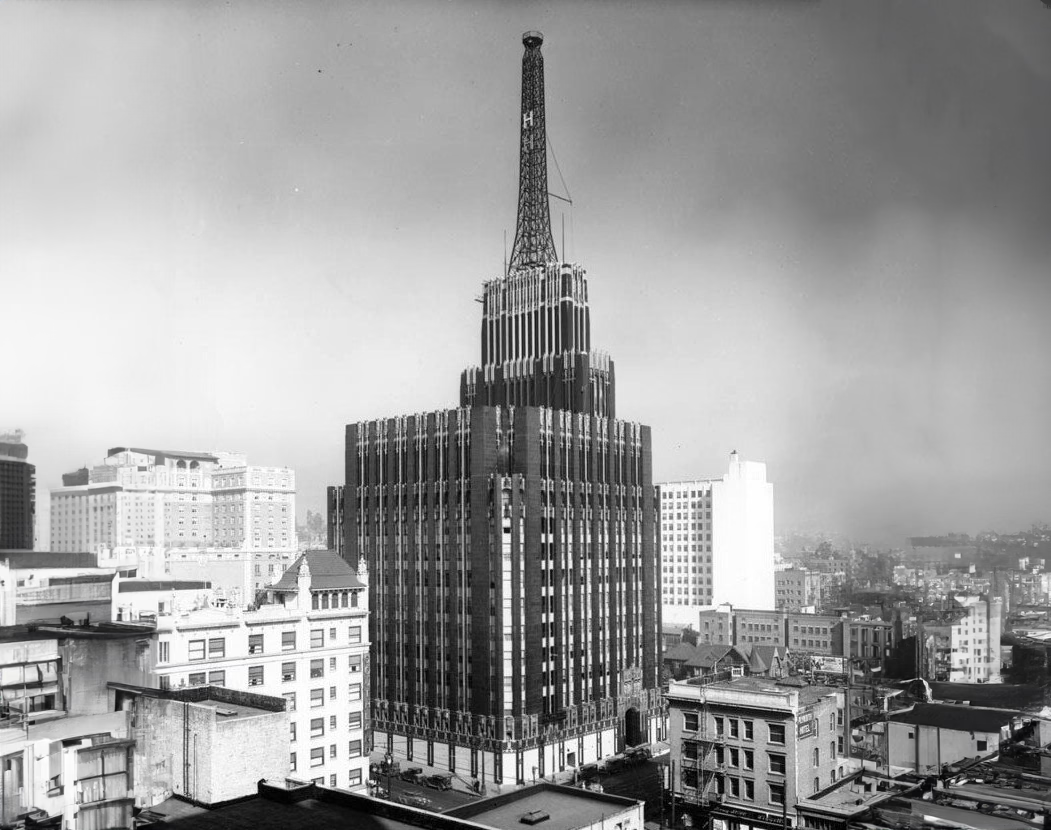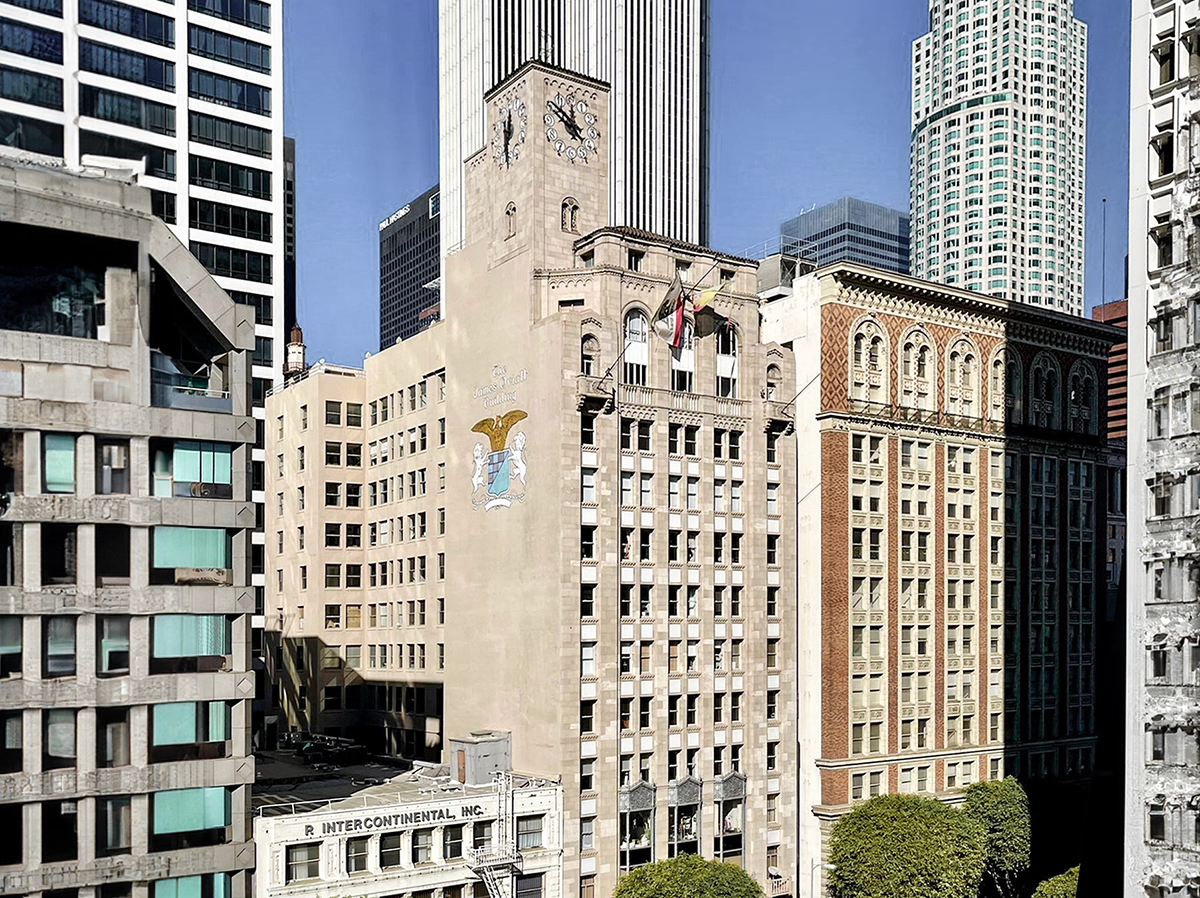Richfield Tower vs James Oviatt Building


Comparing the Richfield Tower and the James Oviatt Building is interesting because they both stand in Los Angeles, CA, and were completed just one year apart, but they were designed by different architects.
This offers a unique glimpse at how rival designers approached projects in the same city during the same era.
Height & Size
These two towers present an interesting contrast in their proportions. The Richfield Tower rises higher at 371ft (113m), while the James Oviatt Building reaches 161ft (49m). However, the James Oviatt Building accommodates more floors with 13 levels above ground, compared to 12 floors in the Richfield Tower.
This suggests different approaches to interior space design. The Richfield Tower has an average floor-to-floor height of approximately 9.4m, while the James Oviatt Building has more compact floors averaging around 3.8m each. The taller building's more generous floor heights might indicate grander interior spaces, higher ceilings, or different programmatic requirements.
These different proportions likely reflect the specific needs each building was designed to serve, whether driven by zoning regulations, client requirements, or the intended use of the spaces within. The contrast shows how architects can achieve different spatial experiences even when working with similar overall building scales.
Architectural Style
Both the Richfield Tower and the James Oviatt Building were designed in line with the aesthetic conventions of the Art Deco style.
At the time, this style was at the height of its popularity. So both Morgan, Walls and Clements and Walker & Eisen followed what was in many ways expected of them, producing designs that fit comfortably within contemporary architectural norms, rather than breaking with convention.
Uses
Both the Richfield Tower and the James Oviatt Building were designed to serve as commercial towers, and that has remained their main use since their completion, serving similar roles in the urban fabric.
Structure & Facade
These two towers illustrate the many possible ways to combine structure and enclosure in skyscraper design.
| Richfield Tower | James Oviatt Building | |
|---|---|---|
| Morgan, Walls and Clements | Architect | Walker & Eisen |
| 1928 | Construction Started | 1927 |
| 1929 | Year Completed | 1928 |
| Art Deco | Architectural Style | Art Deco |
| Commercial | Current Use | Commercial |
| 12 | Floors Above Ground | 13 |
| 113 m | Height (m) | 49 m |
| Frame | Structure Type | Frame |
| Steel | Vertical Structure Material | Steel |
| Concrete | Horizontal Structure Material | Concrete |
| No | Facade Structural? | No |
| Terracotta | Main Facade Material | Terracotta |
| Richfield Oil Company | Developer | James Zera Oviatt |
| Haig Patigian | Collaborating Artist | Rene Lalique |
| CA | State | CA |
| Los Angeles | City | Los Angeles |
| 555 South Flower Street | Address | 617 S. Olive Street |